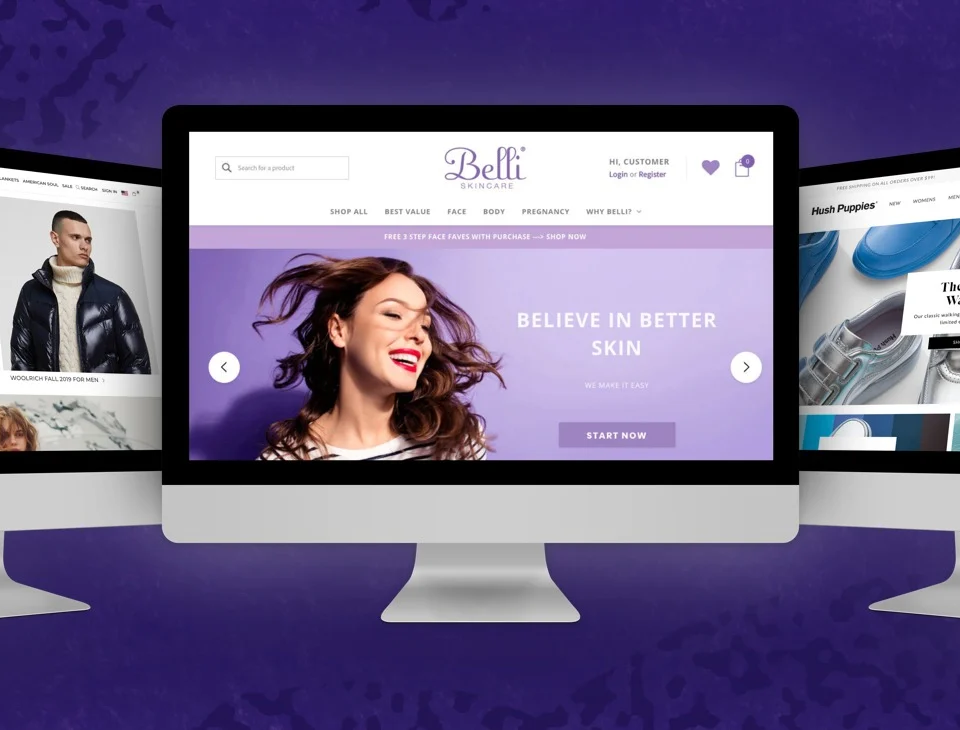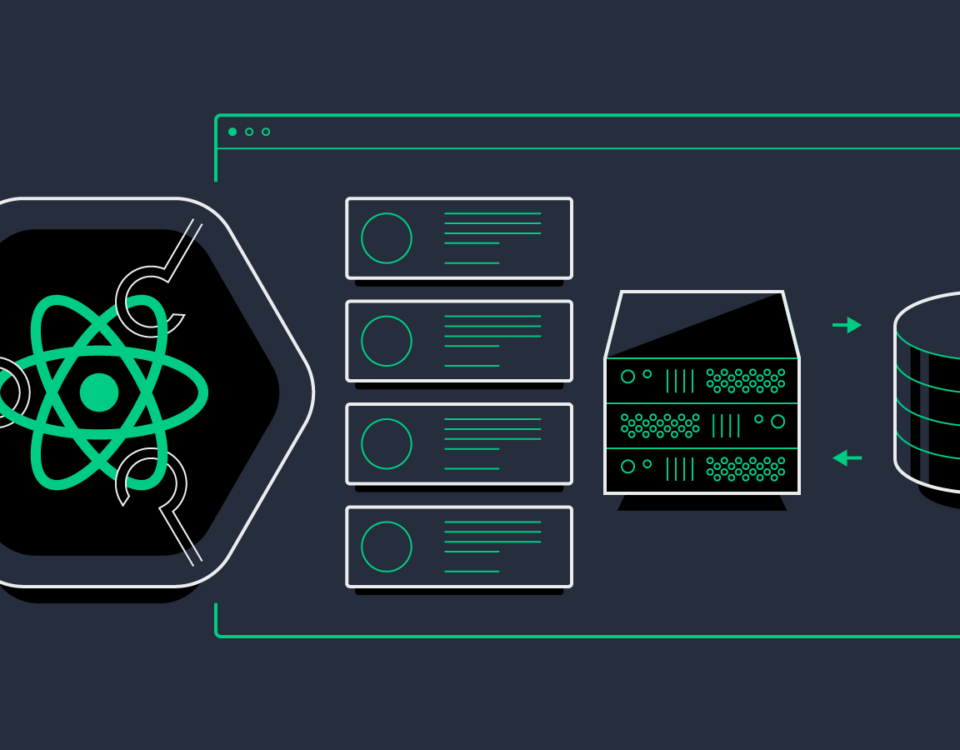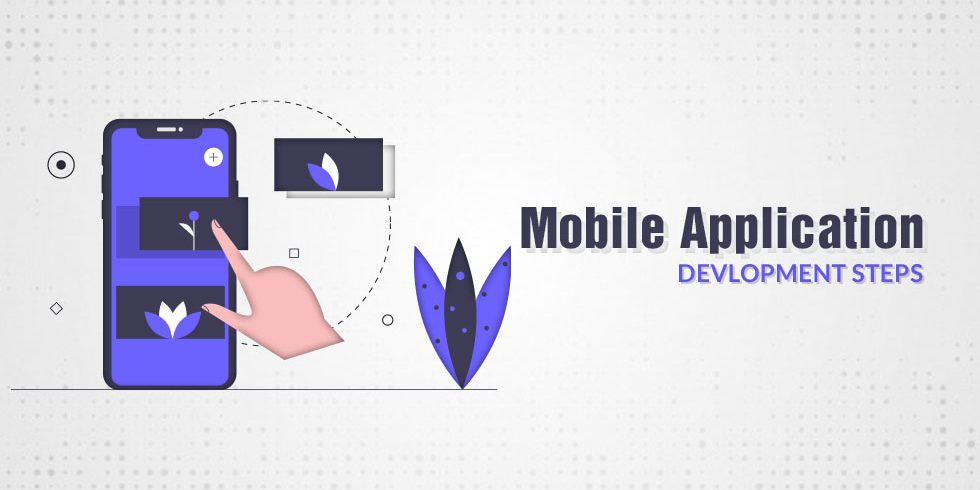
Step by Step Guide for Mobile App Development Process
1st January 2021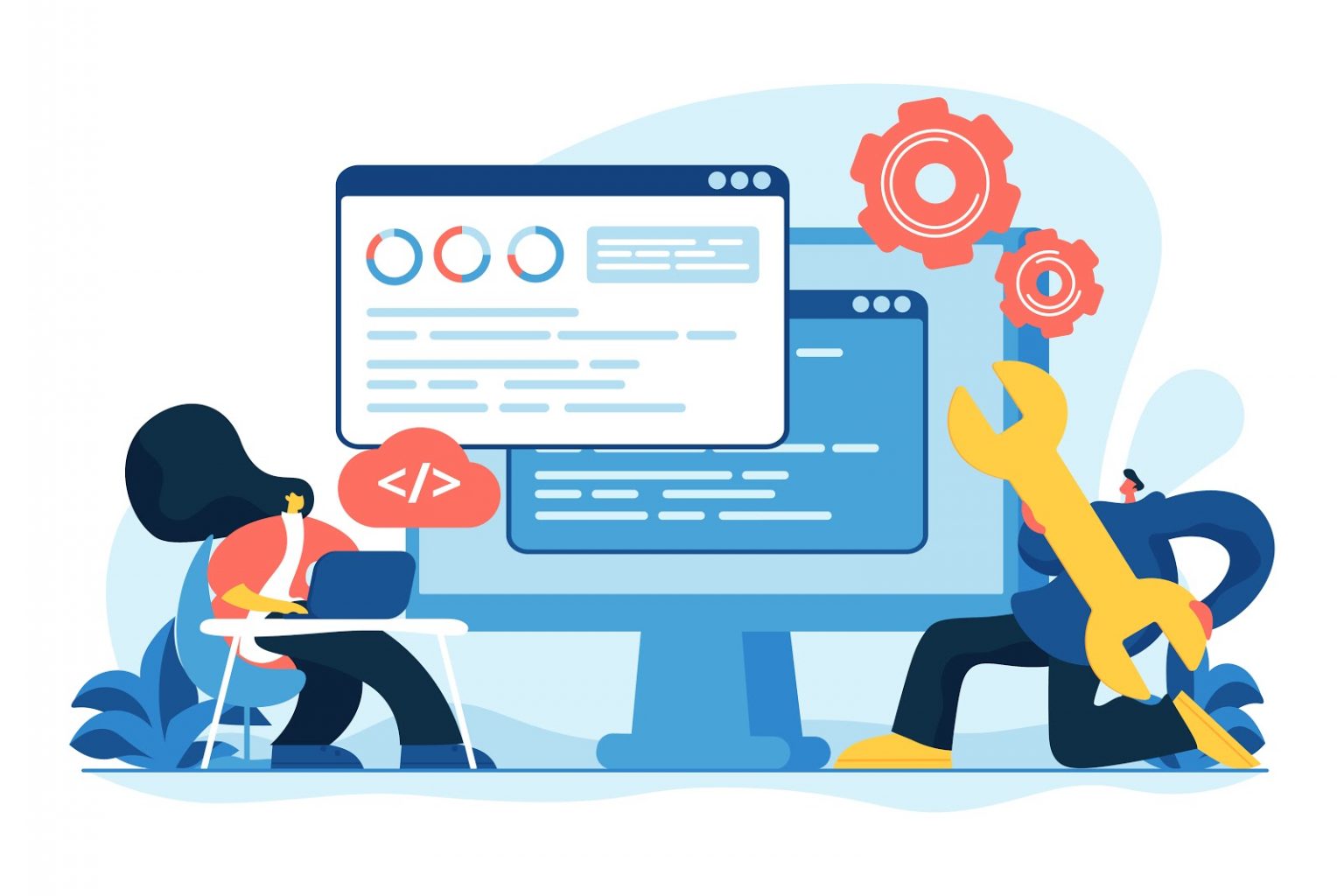
SEO MISTAKES YOU NEED TO AVOID AND/OR FIX
5th January 2021In the world of web application development, there are a lot of technological trends that people are following. Selecting the best technology for your business can make it win the long run. Technology stack is a term that is used for the combination of languages and tools used for web application development.
WHY YOUR WEB APP NEEDS THE BEST TECH STACK?
If you are not a developer and just have a business logic or idea for a web application, then you might be thinking that why is it so essential to go for an appropriate stack? Does Tech-stack really matter?
Believe me, the technology used for your web application development plays a crucial role when it comes to the behaviour and achieving the business logic.
It is like a deep foundation for your skyscraper. You don’t build the roof first or your beautiful corridor, you start from digging deep and forming the foundation. Same goes with the web applications.
For getting the basics right, selection of the appropriate languages, framework, or tools is the first step. People tend to check out the products or services online, instead of going to a physical store.
WEB APPLICATION COMPONENTS & SUITABLE TECH-STACK
To understand the lingo of web application development, it’s essential to go through the components of a web app. These components are the vital parts of any website or enclosed web app that is responsible for its sustained working.
You might hear of client-side & server-side, or frontend & backend in some scenarios. These two are the components of any web app that is built so far. Each of them upholds their specific working that lets users perform functions or any set of activities that the app is meant to perform.
FRONTEND OR CLIENT-SIDE:
The frontend of any web application is the section that users directly interact with. All those elements that the user utilizes for interaction are present over the frontend. There could be buttons, text, colors, styles, images, graphs, navigation, and everything that could be used to interact with the website or consisting web app.
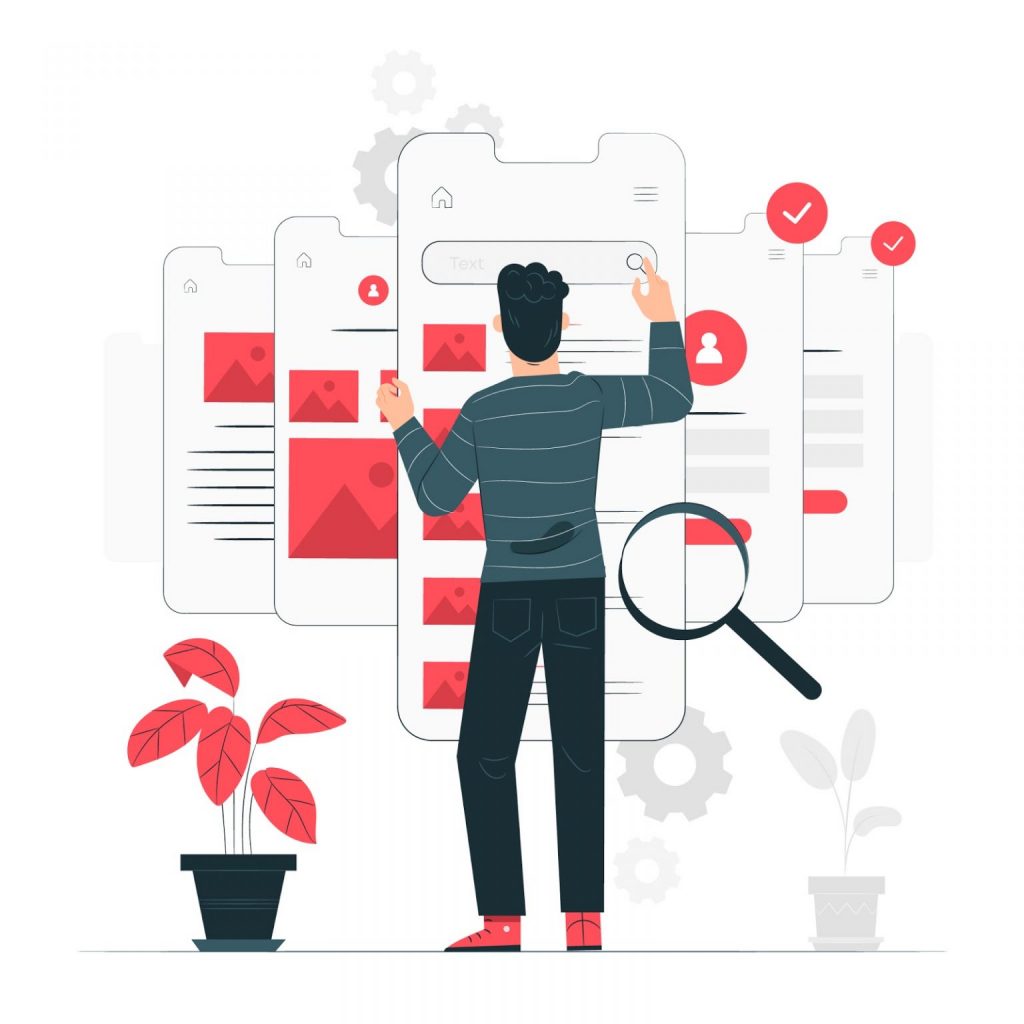
The interface gets presented over the browser of the user whenever the website or web application is opened. The languages that are used for the implementation of frontend development are HTML, CSS, and JavaScript.
The objective of the frontend or client-side is to create an app that is responsive and performing. Responsiveness of the website means it should appear correctly on all sizes of screens, and there should be no abnormal behavior of the elements.
LANGUAGES FOR FRONTEND DEVELOPMENT
HTML(Hypertext Markup Language)
It is a combination of Hypertext and Markup language that gets used to design the frontend of any web page. HTML mainly offers the structure of the information represented on the browser window.
CSS(Cascading Style Sheets)
For making web pages representable and attractive, CSS gets used for determining the style of web applications. It can control attributes of multiple pages at once that let the developers save a lot of work.
JavaScript
In web application development, JavaScript abbreviated as JS helps a lot. For creating interactivity between web pages where the app is functioning, JavaScript is used. It is also responsible for interactive elements, responsiveness, and for enhancing the user experience of the web application.
FRAMEWORKS & LIBRARIES FOR FRONTEND DEVELOPMENT
A frontend framework is a pre-written app structure that works as the presentation layer of your application. It allows the efficient display of the data to the user and offers a way to structure files, style components, and let the developers associate data with the DOM.
React: React is an open-source JavaScript library (could be extended as a framework) that offers an efficient & intuitive way of web application development. The developer community likes this framework due to its efficiency in developing frontend. This framework provides reusable components and provides virtual DOM for faster rendering & development.
AngularJS: For developing single-page web applications, AngularJS is the first choice of developers. It is an open-source project that changes static HTML to dynamic HTML. Developers also find it useful when they want a framework that extends HTML attributes with directives, and data to be bound with the HTML.
jQuery: To simplify the interaction between JavaScript and DOM, jQuery works at its best. It is a set of themes, UI interactions, effects, widgets, and many other elements that can also be used to simplify browser event handling, Ajax interactions, HTML document manipulation & traversing, DOM animations, and cross-browser JavaScript development.
React.js: It’s an open-source JS library that offers UI development. This JavaScript library is efficient, declarative, and flexible for developing the view layer of web applications. The components developed using this library are reusable that saves coding and time.
SASS: It is a CSS extension language that is great for enhancing the existing CSS of a site. SASS is a practical way of writing robust, mature, and reliable CSS that lets developers add variables, nested rules, selector inheritance, mixins, and more. Using a command-line tool or a web-framework plugin, it can be translated into a well-formatted & standard CSS.
Bootstrap and SemanticUI are also popular frameworks; they focus on creating readable & maintainable HTML & CSS and emphasizing consistent visual designs. Where Vue, Angular, and React are great at structuring data flow throughout the web applications, allowing the developer to focus on controlling the data instead of focusing on the DOM updation.
BACKEND OR SERVER-SIDE
The backend of any web application is like the engine of a car. It drives the whole application functionalities and achieves the business logic behind the web application. This part of a web app is not visible to the users, and it is responsible for the fine-working of all the functionality on the client-side.
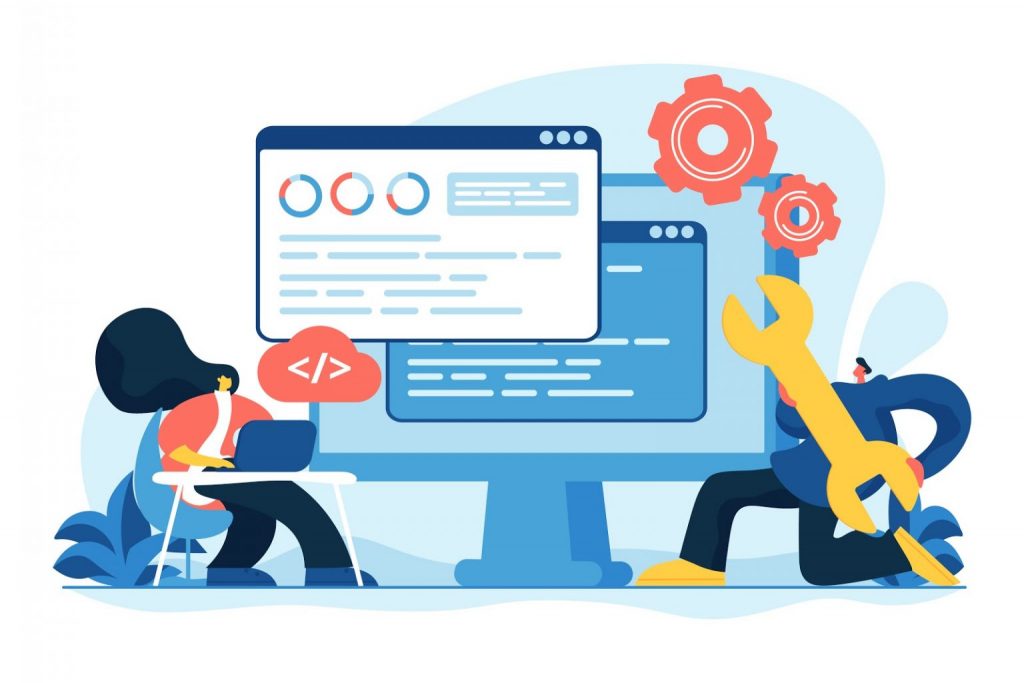
All the components and their characteristics get accessed by users on the frontend of the application. Backend development is one of the most crucial parts of web application development where developers work on creating libraries, writing APIs, and working with system components to make the application work streamlined.
LANGUAGES FOR BACKEND DEVELOPMENT
Python: It is a high-level, interpreted general-purpose programming language for faster development, and to integrate all the systems & components more efficiently.
PHP: PHP is a great scripting language for server-side programming, and this scripting language is one of the best web app development technologies. It is suitable for web development, and the PHP code gets executed on the server-side.
C++: It is one of the most popular middle-level programming languages that is also used for the backend. The code written in C++ is fast, robust, and reliable. Though, it is not suitable to write the backend in the current development scenario.
Java: Java is an object-oriented programming language that is one of the most popular and used for coding. J2SE edition of Java or Core Java is used for web app development that offers builds of complex web applications.
JavaScript: JS can be said to be a must-have language for the development of web applications. It can be used for developing client-side as well as the server-side.
POPULAR FRAMEWORKS FOR BACKEND DEVELOPMENT
Backend frameworks are the libraries that backend programming languages offer to develop the structure of a web app. These frameworks provide ready-made libraries that save a terrific amount of time and give a head-start when it comes to web application development.
Express.JS: To add core web app features to an existing feature-packed Node.js platform, Express.JS is the best framework. It is also a popular framework to write efficient & robust APIs and for developing web application solutions.
Flask: Flask is a Python-based web framework that is lighter than Django and also offers less learning curve. It is a lightweight and straightforward microframework that doesn’t stop users to any kind of library or tools to use.
Ruby On Rails: Rails is an MVC(Model view controller) framework that follows the “convention over configuration” principle. It works over assumptions and helps the developers to achieve more with less code. In total, it’s an excellent choice for rapid development.
Laravel: Laravel is also an MVC framework that simplifies the development of modern, robust, and secure web apps. It comes with an intuitive interface, API support, packages, tools, and libraries. This framework offers the Artisan Console that is its own command-line interface (CLI) that can perform repetitive and complex tasks.
Django: Django is an MVT(Model view template) framework that is genuinely made for more substantial and complex projects. It is also a Python-based framework that offers more secure web apps. This framework itself comes with safety features like protection from SQL injection, user authentication, cross-site scripting, clickjacking, and cross-site request forgery.




